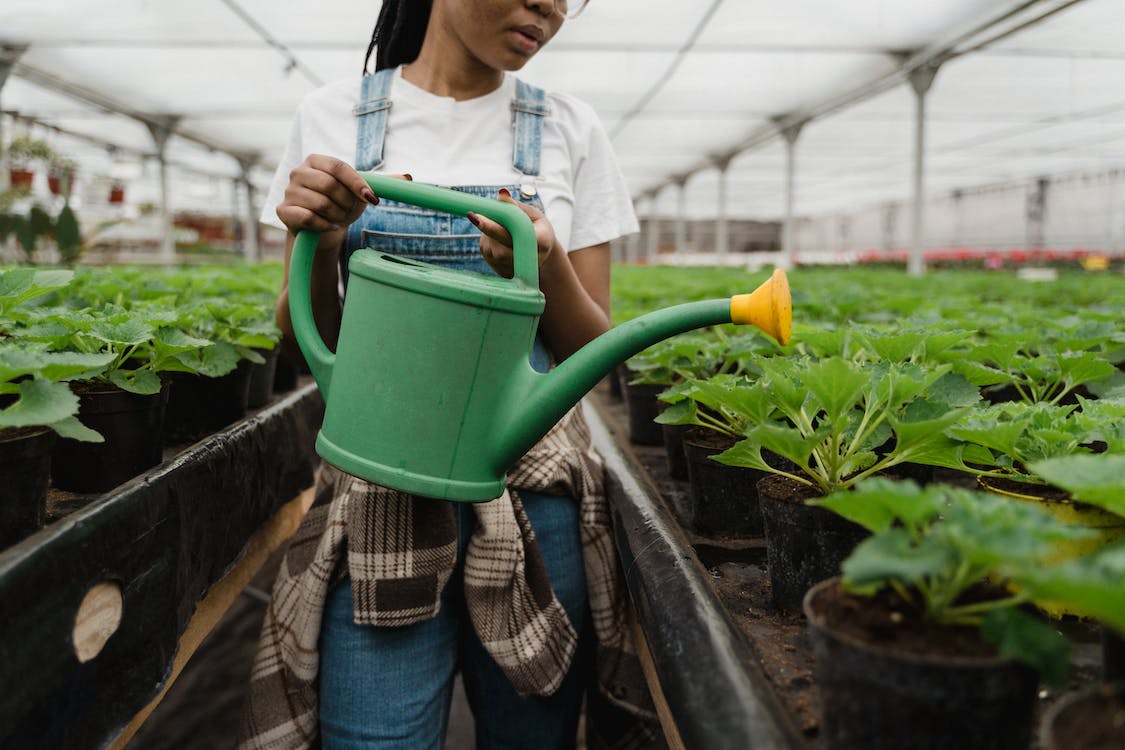Introduction
In addition to being a satisfying hobby, gardening is one of the many ways you can protect the beauty of nature in your backyard. Gardening provides a peaceful retreat from the rush and bustle of daily life, whether you have a large garden or a small balcony. Gardening is a pleasurable hobby; therefore, many look forward to it. This activity might be advantageous to everyone who enjoys spending time in nature. From seeds, you grow plants, and after the harvest, you can savor the results of your labor. Depending on the size of your garden, you might need to devote a few hours each day to plant care. This article will investigate how gardening can be a satisfying pastime. This also offers a thorough review of the benefits of gardening as a pastime.
Different Types and Methods of Gardening
When you begin gardening for the first time, you may encounter several gardening techniques and need clarification on the various names used. At times, gardening jargon might seem like a foreign tongue, but learning all your options is necessary to find the ideal type of gardening for you. Over time, gardening methods and styles might vary. Additionally, you can simultaneously implement multiple gardening techniques on your site. You need to know your alternatives, whether just getting started or hoping to generate more food by trying different gardening techniques. So, here are the various gardening techniques and fashions and how to make them work.
1. Vegetable Gardens
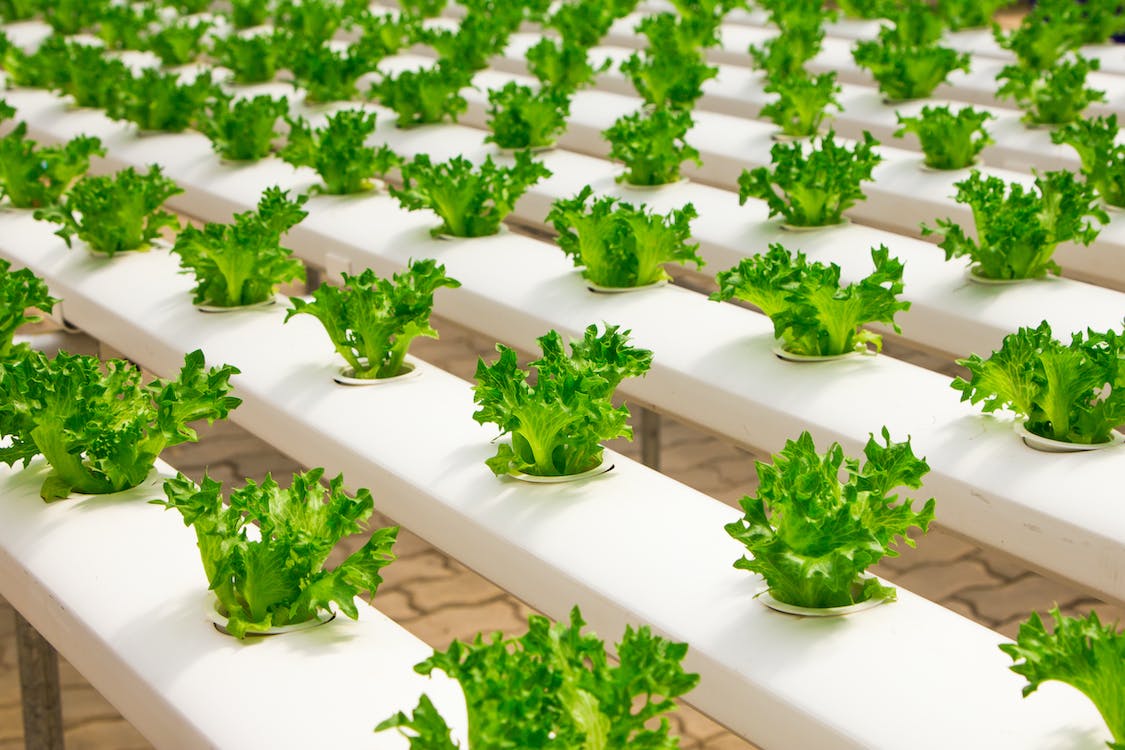
People who care about the environment will find this vegetable garden appealing because it provides your family with fresh vegetables. You may lessen your carbon footprint while consuming the freshest vegetables possible by avoiding packaged food purchases. However, you need to exercise caution regarding the care you give to each produce you decide to plant in your vegetable garden. Taking care of these vegetable types of gardens is far too straightforward. Some veggies need more water than others, and various gardens will have varied needs.
Your efforts will feel worthwhile because seeing your hard work pay off is immensely satisfying. If you can do it with careful planning, choosing which veggies to plant in your garden should be simple. If you are new to gardening, choosing simpler veggies for novices to cultivate is best. You can learn more quickly with tougher veggies; if you feel more comfortable, you can try more delicate varieties.
2. Container Garden

Growing plants in pots instead of the ground is known as container gardening. It’s an excellent option for those with little space. Container gardening allows you to cultivate a variety of plants in pots and other containers. There are many different types of containers you can use, ranging from common gardening pots to more exotic ones like hanging baskets or even used wine bottles. Growing plants in containers is a terrific method to make the most of your available space, boost productivity, and create the garden you want. Patios and balconies benefit significantly from it. The only drawback is that plants cultivated in containers require more frequent watering.
3. Raised Garden
For individuals who reside in places without healthy soil, raised gardens are crucial. This is accomplished by building a raised garden that will serve as a space or a garden area and by preparing the soil for a specific purpose. Construct a platform in your backyard to act as your garden and rest on top of the natural soil. After the raised platform has been constructed, you may buy healthy soil that will work well for the various plant species you want to include in your garden. The most crucial step in this gardening technique is creating fertile soil.
4. Flower Gardens

Thousands or millions of distinct flower gardens exist. Some, like roses, orchids, tulips, and many more, only contain one kind of flower, but the majority combine several. Another trendy style of garden is a flower garden. A lovely flower garden on your property would significantly enhance the aesthetic appeal of your yard. It’s a fantastic way to color your yard and increase its aesthetic intrigue. Be cautious about the flowers you grow in your yard since some can be difficult to maintain.
5. In-Ground Traditional Gardening

You could picture a little area of land that has been tilled, planted, and taken care of to produce vegetables and fruits when you hear the word “gardening.” This is how inground gardening has traditionally been done. Your plot can be as big or as tiny as your available space allows. If you have the space and the ability to labor in the dirt while on your hands and knees, it’s a beautiful form of gardening. If you care for your garden and soil, you can grow everything you want in this garden style (depending on space).
6. Aquaponics
In this gardening technique, plants and fish are grown in a water environment. Because the fish produce living fertilizers, some hydroponic principles are used. The fish that you raise in your aquaponic garden can also be farmed. With the help of aquaponics, the nitrates in fish waste are converted into food for the plants. Since your plants require water to develop, it also helps preserve much water. However, it is pricey and takes up a lot of room.
7. Vertical Gardening
People can now grow a garden wherever they choose to reside, thanks to the vertical garden concept. Some city dwellers who garden nevertheless eat food that is grown nearby. Because plants may grow successfully on balconies, patios, and inside, city inhabitants make great vertical gardening candidates. You can buy pouches to grow vertically or a vertical gardening setup to create a garden.Vertical gardening is a popular style of gardening that may be applied practically anywhere. There are some constraints on what you can grow because of your vertical layout. The most common plants that are ideal for a vertical gardening setup are fresh herbs and lettuce.
8. Organic Gardening
Biodynamic gardening is similar to organic gardening because it doesn’t utilize artificial fertilizers or pesticides; the difference is that this method is more concerned with creating a more extensive ecosystem. Instead of fighting against nature’s inherent rhythm, gardeners focus on working with it. Many biodynamic gardeners employ age-old methods, and the soil’s health is one of this gardening approach’s core concerns. A significant component of biodynamic gardening is composting.
9. Greenhouse Garden
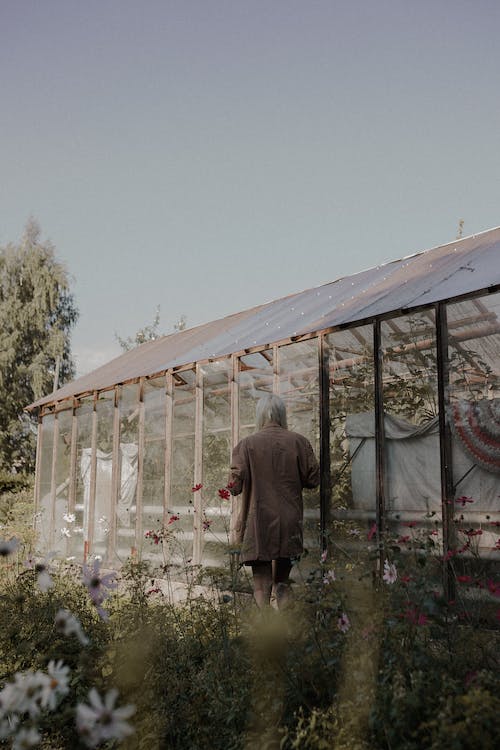
A greenhouse garden is reasonably practical for successfully growing plants. No matter what time of year, the greenhouse maintains a warm environment for the plants or trees. Individuals commonly use this technique to grow plants outside the appropriate growth season. However, setting up a greenhouse garden will take a lot of work, and it will cost a lot of money and equipment to get everything going. Serious farmers and severe gardeners are the primary users of this greenhouse-growing technique. Small greenhouse areas have begun to appear on the market; you can get these for a reasonable price and use them to protect plants when it becomes colder outside the garden area. Although smaller and less complicated than a vast greenhouse, these little greenhouses are helpful.
10. Aerial Gardening
Mist is used to cultivate plants in the gardening technique known as aeroponics. Aeroponic gardening involves spraying a water-and-nutrient solution onto plant roots suspended in the air. Aeroponic gardening is a fantastic choice for people with limited room who wish to grow plants indoors.
Useful Tips for Gardening
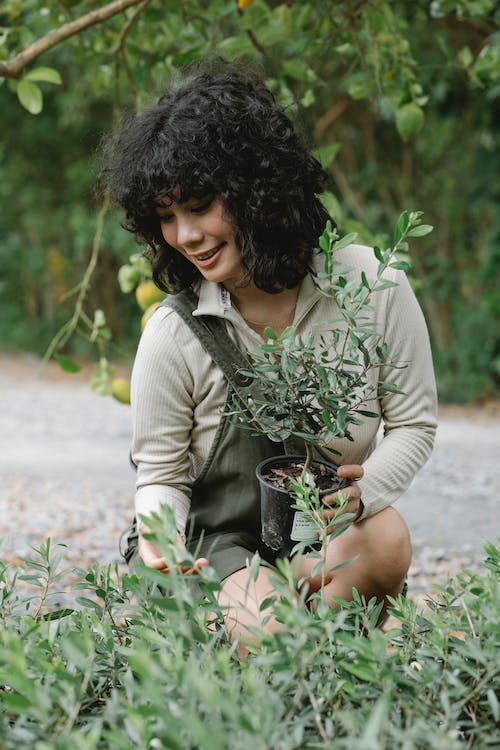
When your efforts pay off, gardening is more satisfying. Whether you have a green thumb or not to ensure that all of your plants grow and thrive, you can read through this list of helpful tips to make your gardening experience more rewarding. When you begin gardening, It may feel overwhelming to have so much to learn and so many questions. The good news is that the natural world makes for a great instructor. As you garden, you’ll learn more about what works and what doesn’t. Refer this list of fundamental gardening advice to find the answers to some of the questions that newbies have the most frequently. Also, remember to enjoy yourself when growing your food and lovely flowers in your yard.
1. Plant your vegetables in plain view.
Plant herbs and vegetables close to your front or back doors. You’ll remember to keep them hydrated because you’ll see them frequently. They’ll also be close by if you need dinner ingredients.
2. Never compromise on drainage.
Although at first glance this might seem like an odd advice, it might be the difference between your plants living and dying. If there isn’t a big enough hole or holes for water to escape from your container, your soil could get too wet and your plants’ roots could rot. The plant might eventually perish as a result. Unfortunately, a lot of garden pots available don’t have enough drainage. To improve drainage, bigger holes might be drilled, punched, or carved. It is a pure myth that adding stones, gravel, or broken pots can help the drainage in your container garden.
3. Start Little
Another way to phrase this is only to take on what you can handle. Consider how much time and money you will put into the project, including installing and maintaining it. Starting small will require less money and increase your chances of success because you won’t have to devote as much time to managing it. And as you learn what is practical over time, you can always grow your garden. This tiny vignette could be placed in a single afternoon, requiring little upkeep during the growing season.
4. Begin your garden with quality soil.
Work in manure, dried peat moss, or compost to create nutrient-rich planting beds. The amended soil is lighter, drains better, is easier to weed, and promotes faster root establishment.
5. Assess Your Light
People often need to overestimate the amount of sunlight their garden containers receive. Although you can pick a lovely plant for just about any amount of light, you must first decide how much light will enter your container. Decide where you want your container to go, then observe how long the sun shines on it to gauge how much direct light it will get. A solar calculator can also be used to determine how much sunlight you receive.
6. Choose the Type of Garden You Want.
Grow what brings you joy, whether vegetables for eating, flowers for design ideas, or shrubs and trees for landscape beauty. Your decision is yours. Next, choose a style. Is it a shade garden with dense plantings, a colorful cottage garden style, or a formal design with geometric shapes? You can reduce the number of plants you choose to grow by using these gardening suggestions.
7. Give Your Plants Food
For the vast majority of plants, fertilizer is essential to their success in your soil. It is possible to add a slow-release fertilizer to potting soil. To achieve this, prepare a significant quantity of potting soil mixed with fertilizer in a bucket, or fill your pot with potting soil, then stir in the fertilizer. Many people use commercial fertilizer, but while it may nourish your plants and promote their growth, synthetic fertilizer will also eradicate the beneficial soil organisms. You must continue using organic fertilizer after utilizing synthetic fertilizer since these organisms are crucial to organic farming.
8. Keep gardening supplies nearby.
Make sure you keep a spare set of hand tools and garden twine in a water-resistant container in your garden. You won’t need to rush to the garage or potting shed to get supplies when you see weeds, broken rose canes, or a tying-up stem. Garden tools such as shovels, work gloves, watering, bypass pruners, and others will make your gardening experience much easier, especially if you plan to work on a more significant traditional in-ground type of garden.
9. Toss some new mulch in your garden.
Every year, add new mulch to your gardens. You will need to weed and water less frequently if you cover the soil with a 2- to 3-inch mulch, preventing weed seeds from germinating. Mulch has several advantages, one of which is that it unifies a garden. That underlying ribbon of mulch gives a garden vignette a more finished appearance because of its consistent color and texture. Mulch also maintains soil moisture, suppresses weed growth, and lowers soil temperature. Additionally, it prevents bare soil from burning and cracking in the sun, which obstructs irrigation water absorption.
10. Make a garden inventory.
Save the perennial plant tags and put them close to your go-to gardening manual to keep all of your planting and gardening advice in one location. Make a running list of newly added plants and their locations to help you remember what you planted where and avoid accidentally weeding (and replacing) a “good plant.”
Benefits of Gardening
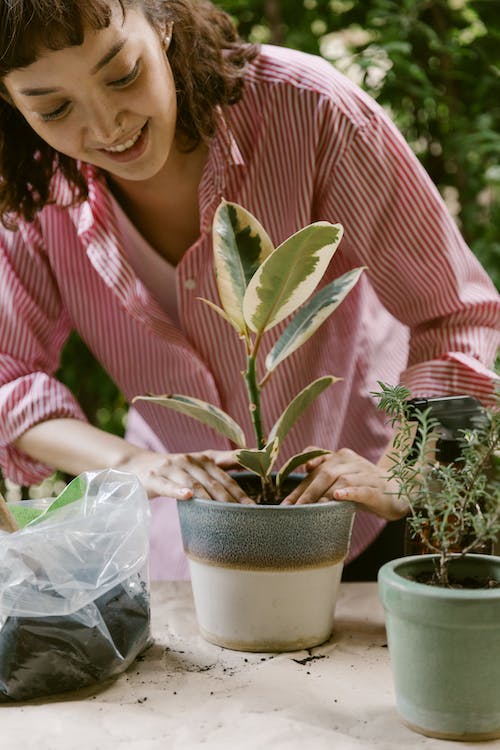
One of the most common ways individuals connect with nature is through gardening. People build gardens for different reasons, such as to make use of unused outdoor space, to enhance the curb appeal of their home, or to have access to fresh herbs and vegetables. Whatever your reason, it’s important to keep in mind that starting a garden will benefit not only the environment but also your emotional, physical, and mental health.
1. Gardening Purifies the Air
When you grow a garden, you instantly change the environment and produce a natural air filter. Plants absorb carbon dioxide from the environment through their leaves and use it as fuel. We breathe oxygen, which is produced by this process. Plants that die degrade into the soil and replenish the ecosystem with nutrients. Other plants can then get these nutrients once more. They absorb toxins in the air and water around plants. It promotes healthy plant growth. Our dirty planet can be cleaned up by planting trees and other vegetation.
2. Your body can fight sickness with the help of outdoor gardening.
You’re closer to a plant than you would think. Your body is capable of photosynthesis, the process by which plants create their own sustenance by utilizing sunlight. One of the minerals you need, vitamin D, is produced by sunlight on your skin. Depending on how much of your body is covered by clothing and the color of your skin, research suggests that a half-hour in the sun can result in between 8,000 and 50,000 international units (IU) of vitamin D being produced in your body. Numerous bodily processes, including bone and immune system health, depend on vitamin D; these are just a few.
3. Creates a Habitat for Insects and Birds
It can be relaxing to awaken to the sound of chirping birds. Starting a garden with little trees to attract birds to your house is a terrific idea. To give birds a place to nest, you may even build or buy birdhouses and arrange them thoughtfully throughout your house. Beneficial insects, including mantis, army beetles, ladybird beetles, and tachinid flies, are also drawn to green settings. These insects assist in reducing the number of pests or bugs present. Remember that birds consume a variety of pests that plague your lawn and garden. Birds and insects are pollinators, which means they aid in fertilizing various plants.
4. Gardening improves the general quality of life and lessens the severity of mental health issues, including depression and anxiety.
Researchers discovered that gardening lowered stress, lessened anxiety and depression, and improved general quality of life. Individuals who participated in horticulture therapy saw more noticeable gains than those who carried out less regimented gardening activities. Numerous causative pathways, including the general health advantages of close contact with nature, which may be “cognitively restorative” and lead to “restoration of attention fatigue,” may explain correlations between gardening and better physical and mental health.
5. Gardening replenishes and defends the soil.
To prevent soil from being washed away during heavy rains, plant roots help to bind the soil together. Extensive root systems prevent topsoil from shifting during periods of heavy rain. By supplying water and nutrients, roots aid in plant growth. Annual plants decay and die, becoming nutrients for plants the following year. One of a garden’s most crucial components is the soil. Nothing can develop without healthy soil; thus, controlling soil erosion is essential.
6. Gardening helps you stay strong, sleep better, and maintain a healthy weight.
Gardening is a good kind of exercise. Raking and cutting the grass is light to moderate activity, whereas digging, digging, and cutting wood are examples of hard exercise. In either case, working in a garden engages the body’s primary muscular groups. According to studies, gardening can help prevent both age-related weight gain and childhood obesity because it requires physical activity. According to experts, gardeners are more likely to obtain a full 7 hours of sleep at night.
7. As you age, gardening can help preserve your memory.
Doctors have long recognized the benefits of exercise on brain cognition. Researchers discovered that giving 20-minute gardening exercises to dementia patients receiving inpatient care improved several brain development factors linked to memory in both males and females. Researchers also discovered that horticulture therapy, which involves gardening to enhance mental health, maybe a successful dementia treatment.
8. Cuts back on carbon footprints
You can cultivate your food in gardens. As a result, you won’t need to buy most of your fruits, veggies, and herbs from your neighborhood supermarket. Using farm chemicals and equipment, commercial farming typically significantly negatively influences the environment. Additionally, the produce at the supermarkets typically comes from a distance; thus, the transportation process impacts the environment. The quality of the goods you purchase is also impacted by lengthy transportation times. Owning a garden allows you to contribute to environmental protection while ensuring that you always eat fresh food.
9. Growing plants can reduce global warming.
When heat-trapping chemicals like carbon dioxide accumulate in the atmosphere, global warming results. As a result, temperatures increase, melting glaciers and ice caps and raising sea levels. The effects of global warming can be lessened by planting trees, shrubs, and flowers because they absorb carbon dioxide and other heat-trapping chemicals. Through respiration, trees and other plants produce oxygen by employing photosynthesis. By releasing oxygen into the atmosphere, heat-trapping gases are less abundant there.
10. Growing plants can improve your mood.
Studies conducted worldwide have shown that gardening boosts self-esteem and mood. People experience less anxiety and depression when they spend time in a garden. People with depression who engaged in a gardening intervention for a multi-year study found that all elements of their mental health, including their depressive symptoms, had greatly improved.
Conclusion
Hundreds of millions of people in every part of the world participate in gardening and other outdoor hobbies. Regular gardening has been shown to improve overall physical health and well-being and lessen the intensity of anxiety, depression, and other particular mental health issues. When properly cared for, gardens are aesthetically beautiful and provide an excellent resting area after work. Songbirds, butterflies, and other animals can live there. Most notably, they are essential to environmental protection.
When establishing your garden, try to grow local plants and trees. These plants typically adapt well to the local climate conditions. Additionally, they don’t require ongoing maintenance because they have a history in the region. To promote biodiversity, choose plants that get along with other plants and try to maintain the garden regularly.
